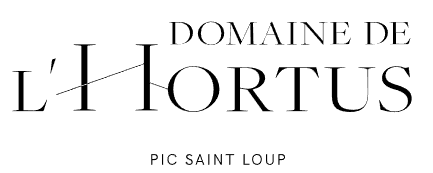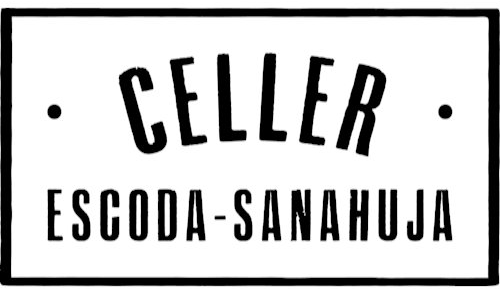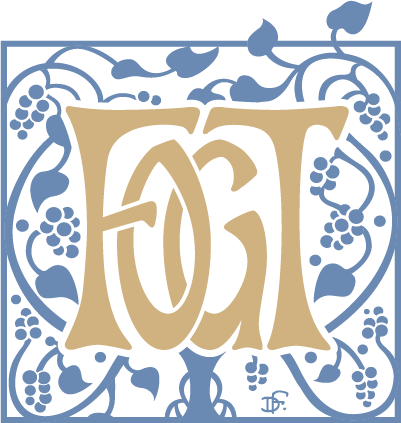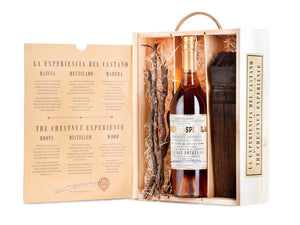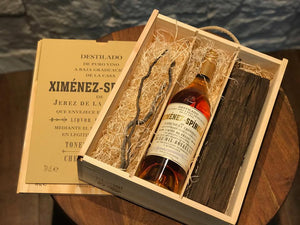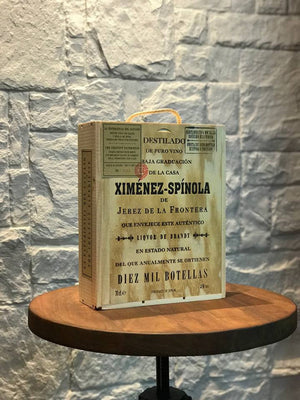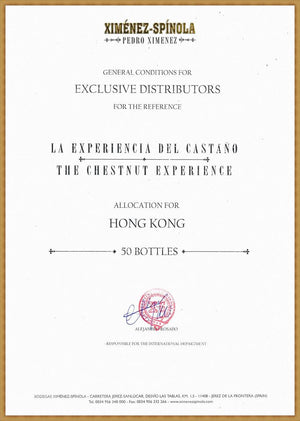Sens Wine Cellar 獨家發售,
全港只有50盒!
Ximenez-Spinola 是在西班牙唯一,也是全世界唯一專門以 Pedro Ximenez 葡萄釀酒的酒莊。
這枝BRANDY 是由莊園內自家種植的Pedro Ximenez提子在陽光下曬乾後柞汁, 經蒸餾後會在極傳統的Chestnut木桶內陳年! 年產量只有10000枝,因此名為「BRANDY 10000」。是一枝口感幼滑和平衡度細緻的白蘭地!
而這個珍貴的Chestnut Experience 版本則是極度具有收藏價值,盒內附有超過75年歷史的Chestnut 木塊(來自陳年酒的木桶)及木枝。這是1939年前Jerez產區最常見的木桶類型, 後因西班牙內戰過度砍伐而數目減少, 最後普遍用美國木桶取代,莊內僅餘38個。一打開包裝木盒已有陣陣濃郁的Chestnut味..與PX提子的甜香配合得恰到好處!
Ximenez-Spinola is the only winery which make wines with single grape variety of Pedro Ximenz in Spain and in the world.
This brandy is produced by the must of the sun-dried PX grapes. After being distilled, the must would be aging in the rarely seen chestnust wood barrels. The yield is only 10000 bottles per year. Therefore it is named as “Brandy 10000”. It is a silky and well balanced brandy.
This Chestnut Experience special edition has high collection value. In the wooden box, a 75 year-old chestnut wooden chip from the old barrels and the tree branches are included. This is the most common barrel type in Jerez before 1939. Due to deforestation during Spanish civil war, the number of chestnut woods declines drastically. Most of the barrels are finally replaced by chestnut barrels from America. There are only 38 indigenous chestnut barrels left in the winery. The aroma of chestnut runs into your nose immediately after opening the wooden pack, best paired with the sweetness of the grapes!
Only sold at Sens Wine Cellar! Only 50 boxes in Hong Kong!
產區:
Jerez de la Frontera (Spain)
種類:
白蘭地
葡萄品種:
100% Pedro Ximenez
容量:
700mL
酒精度:
40%
生產過程:
蒸餾出來的酒液是整個陳年過程的第一步。完成蒸餾後,萃取出來的酒精會在750公升栗子木桶內進行陳年。而這些木桶曾用作釀製Pedro Ximenez乾葡萄酒。
栗子木本來是Jerez區最常用的釀酒木桶。在1939年後,經歷過西班牙內戰後,過度伐木令酒莊被迫轉用來自美國的栗子木桶。這些白蘭地在裝瓶前曾在栗子木桶中陳年最少十二年。
栗子木的最大特點是,它不會令酒產生苦澀的味道。它的味道和香氣主要來自氧化。用原生栗子木陳年的白蘭地,能令Pedro Ximenz葡萄的味道記憶得以延續下去。
品酒筆記:
色:琥珀色,清晰,閃亮如油般。由於栗子木的中和作用,令酒色不存在暗啞
香:香味深刻卻又不沉重,本桶把令人聯想起葡萄乾及梅乾的味道注入酒中。氧化作用令香氣得以持久,並帶來優雅而不刺激的芳香。
味:味道和諧平衡,反映出蒸餾酒的高質素。餘韻的天然甜味,正好磨平酒精的菱角,更使其難以察覺。由木桶帶來的質感沒有為白蘭地帶來苦澀感,反而令味道更為吸引。飲家很容易一杯喝完再一杯,即使它是一支有40度酒精的烈酒。
出於對飲家的尊重,並鼓勵發揮創意,Ximenez Spinola酒莊並沒有為這支白蘭地提供配餐指引。
Region:
Jerez de la Frontera (Spain)
Type:
Brandy
Variety:
100% Pedro Ximenez
Alcohol:
40%
Volume:
700mL
Production:
Distillate of the wines of our house that is part of the first phase of the aging process of the rest of brandies we produce. Once distilled from Pedro Ximenez, the extracted alcohol is aged in chestnut wooden casks of 750 liters, which has been previously seasoned with our wine Pedro Ximenez of raisins.
The chestnut was the basic wood of the cooperage in Jerez, before 1939, when deforestation caused by the civil war, forced to replace it by American oak. This distillate remains at least 12 years in chestnut barrel before being bottled.
The particularity of chestnut is that the wood does not provide excessive astringent notes. Its flavors and aromas are basically of oxidation, being so respectful with the original product that even helps survive the memory of Pedro Ximenez grape.
Tasting Notes:
VISUAL: Amber color, clean, shiny without tinges thanks to the neutrality of the chestnut.
NOSE: The nose intense but not heavy, with aromas reminiscent of raisins and prunes, typical of the seasoning of the casks in which it is aged. The persistence of flavor is mainly due to oxidation, with elegant and not aggressive fragrance intensity.
PALATE: The palate maintains a serene balance, letting appreciate the quality of the original aged distillate. Subtle natural sweetness aftertaste that helps smooth the alcoholic edges, to make them almost imperceptible. Maintains intense touches of wood without adding bitterness and makes it especially pleasant to the palate. Invites to keep drinking as it does not burn the throat despite its 40% alcohol.
“Out of respect to the freedom of all wine lovers and not condition their personal creativity, Ximenez-Spinola’s policy is not to recommend pairing with any of their elaborations”







